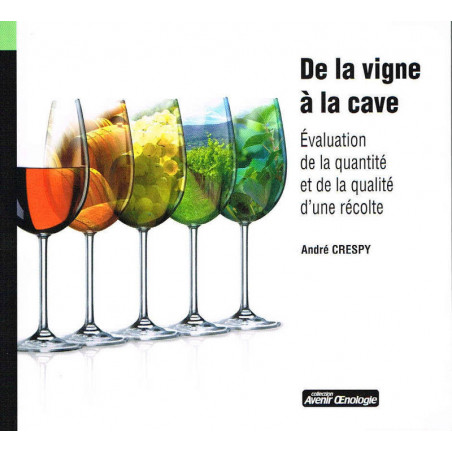INTRODUCTION Not all grapes have the same qualities and winemaking skills. We will say: fortunately, and from this diversity will be born different wines capable of satisfying a wide range of consumers. However, the term "quality", which the seller always associates with a flattering adjective, can be combined in both good and bad ways. If we are to believe the press releases of the producers' unions, the year is still "exceptional, the grapes picked at full maturity are full of sunshine, the late season has been conducive to quality (which one?) etc. ». All this nonsense intended to reassure a public that is not well informed, but suspicious since the more or less recent crises (adulterated oil, chickens in fishmeal, veal with hormones, mad cow disease) hides a diverse and highly contrasted reality: it goes from good, ripe and healthy grapes to a kind of shapeless "magma", greyish, raising clouds of mushroom spores, which are smuggled to the bottom of the reception platforms of the cellars, with the nologist having to extract from it an alcoholic and vaguely coloured beverage! In addition, this product is most often approved in the category it claims, because the approval is, in fact, in the hands of the producers! This is the way European viticulture is going, sure of its rights and proud of its traditions. History shows, in recent times, that these old patterns no longer work. Moreover, recourse to public funds, given the state of the republic's finances, European laws and the organisation of the world market, is becoming extremely difficult. Appreciating the real quality of the grapes in the vineyard is quite a delicate exercise. Many methods have been developed in recent years, in particular, under the impetus of the wine merchant and cooperatives (some) wishing to select prestigious vintages. Through these actions, we are seeing a change in the concept of remuneration and the sharing of the added value offered by the wine industry: producer is no longer enough. You have to be really professional and meet criteria that are not always obvious to those who don't vinify and don't compete with the market. In this book, we will examine the different methods used here and there to assess the quantitative and qualitative potential of the vineyard. We will see that it is quite difficult to be objective, because many parameters intervene until the time of harvest, to modify the quality of the grapes. Sanitary quality is easier to understand, even if we do not always know the repercussions of certain diseases that do not seem to have a direct link with the grapes. Ripeness, a complex phenomenon that we try to define through numerous measurements, has been the subject of important work in recent years, because the moment of picking determines, to a large extent, the ability of the grapes to produce a particular type of wine. For the most advanced vineyards in this field of maturity analysis, the good times of the "kilo degrees", still widely applied in Europe, are considered to be the prehistory of winemaking. Even the way of harvesting has changed, under the effect of new social, economic and technical constraints: it is becoming more and more difficult to find personnel to harvest, nologists demand that the grapes be harvested at night to have fresher and less oxidized grapes, and it is necessary to separate plant debris (leaves, petioles, verjuice) from the bunches in order to limit the risk of herbaceous tastes. Finally, once the grapes are in the cellar, they will undergo a series of operations (known as pre-fermentation) aimed either at correcting their defects or at facilitating the expression of their qualities: we will see that these manipulations are very important, to achieve the qualitative result required by the consumer.





